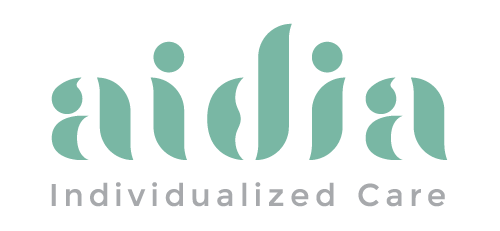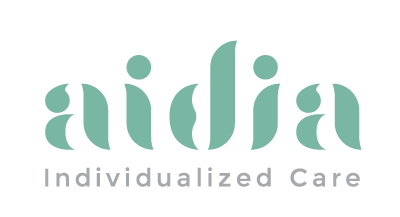The Basics
“You are what you eat,” so the adage goes. Thus, we are slowly harming ourselves by what we eat. The Standard American Diet (S.A.D.) is the root cause of persistent inflammation. The abundance of fast food, processed and highly preserved food contribute to harming our health. To reduce systemic inflammation, we must consume whole locally grown food.
Locally grown food is important and is more nutrient-rich; it is rarely harvested early to withstand travel to the stores and has a shorter shelf life under the fluorescent lights which further leaches nutrients out of the food. Organic food helps reduce the number of chemicals and toxins we ingest and subsequently causes less damage and fewer allergic reactions. However, not all food has to be bought organic; See The Dirty Dozen and The Clean 15 listed below.
The variety of fresh food is critical to maximizing nutrient absorption. We should eat a “rainbow of food” daily; the complete color spectrum: berries, tomatoes, oranges, yellow fruits, and dark leafy greens. This combination of food is critical as practiced for thousands of years in Ayurvedic and Traditional Chinese Medicine.
Never skip a meal; regularly eat breakfast, lunch, a lite snack and dinner. Portion control is vital to maintaining a healthy weight and controlling inflammation. Cutting the typical American portion in half offers plenty of calories for most of us. The average person should take in a total of 1800- 2000 calories per day with 40 to 50 percent from carbohydrates, 20- 30 percent from fat, and 20-30 percent from protein.
We need an abundance of fresh fruit (preferably whole fruit not juices) and vegetables; Cruciferous vegetables offer the most health benefits. Eat minimally processed food with low glycemic loads, avoid food made with flour (“the white foods”), and all products made with high fructose corn syrup, which often is added for taste in fat-free food; so beware of reduced fat products.
It is not the fat, as much as it is the type of fat we eat. Transfats only have adverse effects, and even good oils can become saturated with high heat cooking most typically found in the preparation of french fries, and other fried foods. Monounsaturated fats found in avocado, walnuts, almonds and olive oil are beneficial as they have a higher omega three content which is much less inflammatory than omega six fatty acids.
Cold water fish like wild salmon, sockeye salmon, herring, sardines, black cod (aka butterfish or sablefish) and tuna have an abundance of beneficial omega three fatty acids (no more than 1x/week for tuna and less for small individuals due to Mercury content). The SAD is high in omega six fat content which promotes inflammation. No one truly knows what the precise ratio of omega 6:3 should be, but the standard American diet is typically 20:1 and a more balanced ratio of 5: 1 is beneficial. Nuts in sensible portions, canned wild salmon, pumpkin seeds, and soybeans are good options for improving the omega 6:3 ratio. Omega-3 fortified eggs, hemp seeds and flaxseeds (preferably freshly ground) are another way to increase the omega 3 fatty acids in your diet. If taking a fish oil supplement, you need no less than 1 gram of EPA and DHA so read your labels. Stay tuned for a more comprehensive discussion of oils and fats.
An excellent source of protein comes from beans; and if animal protein is desired, it is best to limit beef products to no more than once per month and ideally only grass-fed cattle. Animals that are caged or restricted from natural behaviors endure more stress and subsequently have higher levels of harmful hormones in their meat. A simple rule of thumb is to eat meat from two-legged animals other than four-legged animals.
Protein added to meals that have a high glycemic index (</= 55) or load (</= 10) help reduce the sugar load. The resultant insulin surge can be lessened and slowed if the food is ingested with protein or fiber. Likewise, adding vinegar to the meal will also lower the sugar spike. If Indulging in pasta, as any good Italian would, cook it al dente (lessens the GI load) and add a little balsamic vinegar to your meal to slow the insulin surge.
Eat more whole grains but only those where you can see large pieces of the grain. Vegetables are rich in soluble fiber; asparagus, berries, and artichokes are good choices. Include non-GMO soy in the forms of edamame, tofu, miso, and tempeh.
Extra virgin olive oil is the best oil to use; however, all oils heated at high temperature can be turned into saturated fats, and all fats can age becoming saturated and hence the rancid smell and taste. It is wise to discard these oils into the trash rather than consume rancid oil. A neutral tasting oil with a higher heat point is grapeseed oil. Enjoy Avocado oil drizzled over veggies at the end of cooking. Strictly avoid margarine, animal and vegetable shortening. Real organic butter in reasonable amounts is preferable to margarine or shortening.
Allow yourself to cheat occasionally but keep mental track; eat clean 80 % of the time and if tempted, cheat no more than 20% of the time. Enjoy a treat of dark chocolate, no less than 70% cocoa for health benefits or for those who already drink alcohol, make it a glass of red wine (1 for females and no more than 2 for men/day). Red wine has Reservatol (an antioxidant) in the grape skin, although liquor and beer do not offer a health benefit.
Drink plenty of pure water filtered through a reverse osmosis system for taste and the least amount of chemicals.
If you are what you eat, it is best to eat healthy to sustain health.
Eat the good stuff, slowly, and enjoy it with a family member or friend for added health benefits! Mangia Mangia!
https://www.ewg.org/foodnews/dirty-dozen.php
https://www.ewg.org/foodnews/clean_fifteen_list.php






